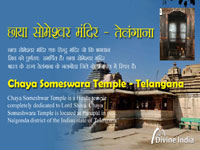

Lord Ganesha, the revered deity in Hinduism, is known for his wisdom, intellect, and the ability to remove obstacles. The mythology surrounding Lord Ganesha includes various incarnations, each representing unique aspects of divinity.
The Divine Incarnations of Lord Ganesha represent unique facets of wisdom, prosperity, and cosmic power. Each manifestation carries symbolic significance, portraying Ganesha as the remover of obstacles and the harbinger of good fortune. Vakratunda, Ekadanta, and Mahodara exemplify his diverse forms, while Gajavaktra and Lambodara emphasize his elephant-headed glory. Vikata, Vighnaraja, and Dhoomravarna showcase his cosmic authority, symbolizing triumph over challenges. These divine incarnations encapsulate the spiritual essence of Ganesha, inviting devotees to seek wisdom, blessings, and divine grace in their life's journey.
Let's delve into the divine avatars of Lord Ganesha and understand their significance.
Vakratunda - The Curved-Trunk Ganesha:
Vakratunda is one of the primary forms of Lord Ganesha, depicting a curved trunk. This avatar symbolizes the power to control negative influences and challenges, paving the way for a smooth and obstacle-free life.
Ekadanta - The Single-Tusked Ganesha:
Ekadanta signifies Lord Ganesha with a single tusk. According to mythology, Ganesha sacrificed one of his tusks to write the Mahabharata. This avatar teaches the importance of sacrifice and the willingness to let go of personal desires for the greater good.
Mahodara - The Enormous-Bellied Ganesha:
Mahodara represents Lord Ganesha with a large, rounded belly, signifying the universe's vastness. This form emphasizes the idea that Lord Ganesha encompasses the entire cosmos within himself, highlighting his omnipresence.
Gajanana - The Elephant-Faced Ganesha:
Gajanana, the elephant-faced Ganesha, embodies qualities like strength, power, and resilience. Devotees seek blessings from this avatar to overcome challenges and obstacles in their lives.
Lambodara - The Pot-Bellied Ganesha:
Lambodara portrays Lord Ganesha with a distinct potbelly, symbolizing abundance and prosperity. This form encourages devotees to embrace wealth with humility and share their prosperity with others.
Vikata: Symbol of uniqueness
This form of Lord Ganesha is a symbol of uniqueness, which indicates the constant support of the devotees in their soul. His formidable face, which is huge in size, shows his ability to overcome all difficulties with unparalleled strength.
Vighnaraja:
In this form, Ganesha is worshiped as the Lord of Obstacles, who is determined to remove all obstacles and hindrances. By meditating on Vighnaraj, devotees can attain prosperity and peace in their life.
Dhumravarna:
This form of Ganesha is with Dhumravarna, which symbolizes a high state of peace, restraint, and self-control. With this form of meditation, devotees can move towards mindfulness and spiritual prosperity in their life, which leads to the attainment of harmony, stability, and prosperity.
Conclusion: The multifaceted avatars of Lord Ganesha illustrate the richness of Hindu mythology and the diverse qualities associated with the deity. Whether worshipped as Vakratunda, Ekadanta, Mahodara, Gajanana, or Lambodara, each form guides believers on their spiritual journey, imparting valuable lessons of wisdom, sacrifice, omnipresence, strength, and prosperity. Devotees find solace and inspiration in connecting with these divine incarnations, seeking blessings for a harmonious and successful life.